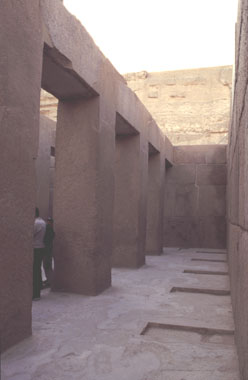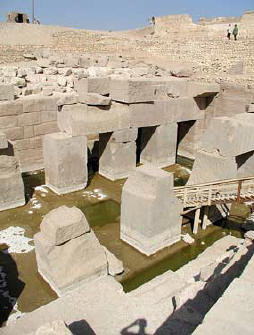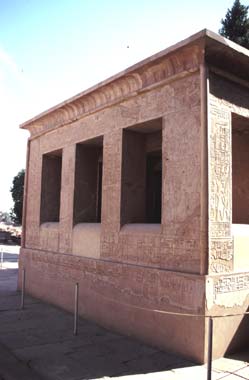|
Ancient
Egypt by Sjef Willockx |
||
|
The first time ever that the ancient Egyptians used stone pillars was during the 4th dynasty: right when they were on the pinnacle of their abilities as builders in stone. Here, in the valley temple of Chefren, they straightaway exploited the monumental possibilities of the new feature to the fullest. That they left all surfaces in the interior blank seems a conscious attempt to further enhance this monumentality. The rectangular recesses in the floor on the right once held seated statues of the king - among which the well-known one from the Cairo museum, with the Horus falcon behind the king's head.
(Photograph: courtesy of Jon Bodsworth) This is the so-called Osireion: an "annex" to the mortuary temple of Seti I (19th dynasty) at Abydos, connected to the worship of Osiris. This building has often been compared to Chefren's valley temple, and indeed: the similarity may very well have been intentional. At the time of Seti, Chefren's temple was already more than a thousand years old: an excellent model for conscious archaism. That pillars were not always used in such an austere fashion as the examples above is shown in this pretty little building: a bark station (originally a booth for the Sed festival) of Sesostris I (12th dynasty), Here, the pillars are carved with spectacularly beautiful reliefs. Here Sesostris is presenting white bread to "Amun-Re, master of the two lands". Back to start Previous Next Thumbnails
|
|
|
|
|
All materials on this site are protected by copyright. All copyright by Sjef Willockx, unless otherwise indicated. |



